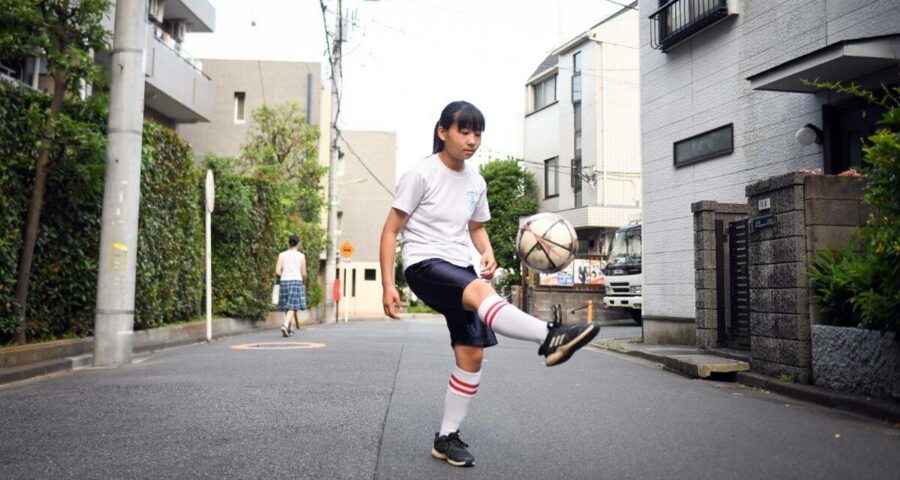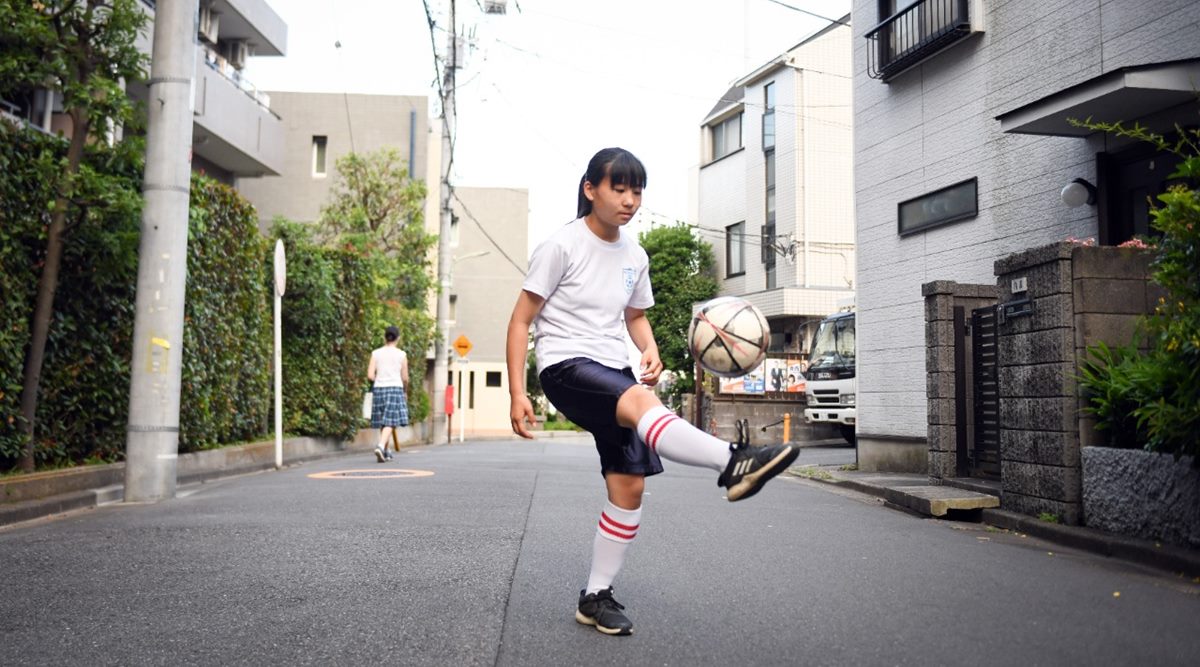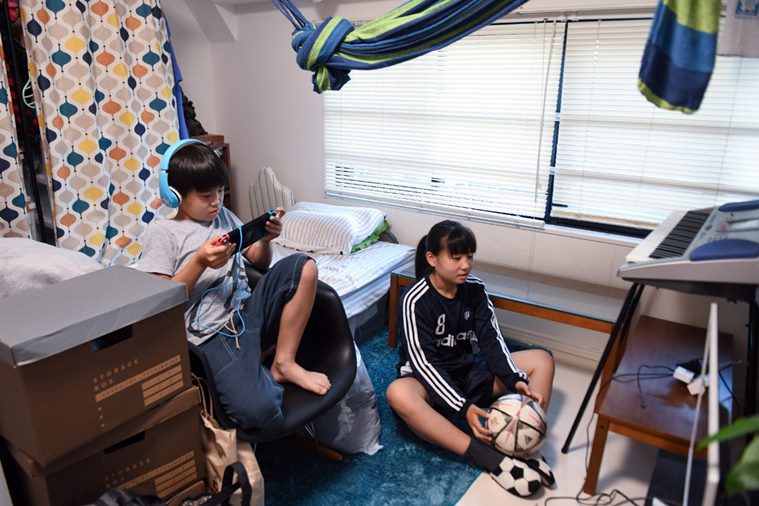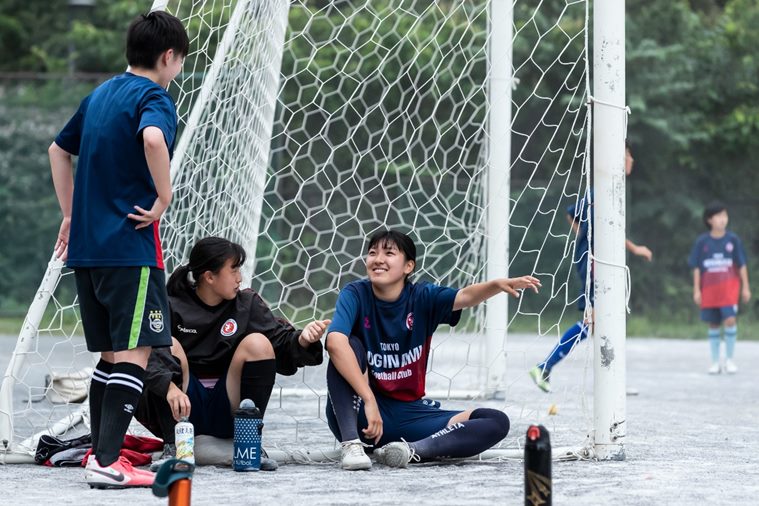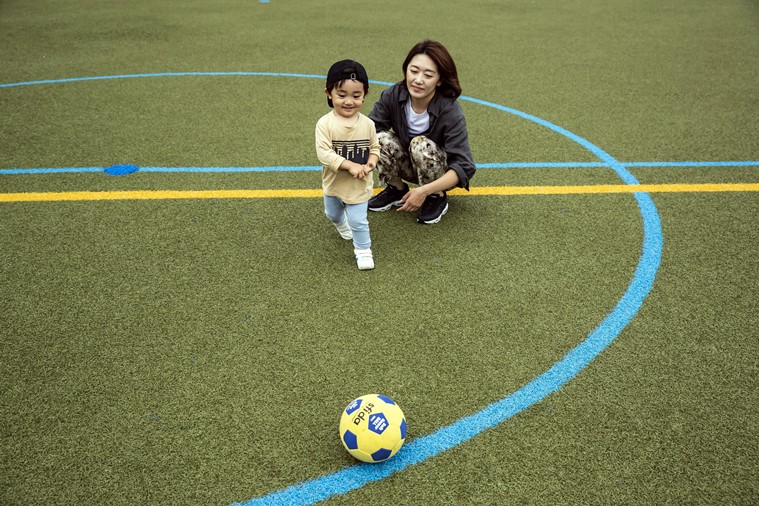The Tokyo Olympics, which open in July, offer an opportunity to anoint another crop of champions to inspire girls with athletic aspirations. But after the Olympic spotlight dims, those like Kurumi will still face powerful obstacles.
By Motoko Rich and Hikari Hida
Kurumi Mochizuki is the kind of skilled soccer player who can roll a ball from between her shoulder blades to the top of her head and onto her right foot, keeping it aloft for more than a dozen kicks. She makes it look so easy.
Yet when she practices with her local club team in southeastern Tokyo, her coaches sometimes advise her to take longer breaks than her teammates, and warn her not to pick up heavy bags of balls when clearing equipment from the field.
All because she is a girl.
Kurumi, 13, is the only girl on her team. She plays with boys because there are no girls’ club teams near her neighborhood and no girls’ team at her middle school. Finding a team in high school will be difficult, too. Only one of the 14 schools in Kurumi’s area offers a girls’ team. Her older brother, who plays soccer at his high school, has had no such trouble — almost all the high schools in the district have boys’ soccer teams.
“Boys have it easier,” she said. “I am envious of that.”
Such is the state of sports for girls and women in Japan, where female athletes often have to go to great lengths to pursue their dreams. Opportunities are limited by the rigid gender norms of Japanese society, which shape women’s lives not only on the playing field, but also in the home and workplace.
The disparities have remained stark even as Japanese women have outperformed the country’s men in one Olympics after another, and a women’s tennis player born in Japan, Naomi Osaka, has emerged as one of the world’s biggest sports stars.
The Tokyo Olympics, which open in July, offer an opportunity to anoint another crop of champions to inspire girls with athletic aspirations. But after the Olympic spotlight dims, those like Kurumi will still face powerful obstacles.
Japan has no law like Title IX, the American statute that requires schools receiving public funding to offer equal opportunities to boys and girls, and there is no public data on how much schools spend on extracurricular sports or how it breaks down on gender lines.
Female athletes who persevere often have to push past stereotypes that they are doing something unladylike, jeopardizing their chances of attracting boys and later becoming wives and mothers. Even their coaches view their participation through this lens, in some cases giving them etiquette lessons to ensure they are ready for domestic life.
It’s yet another way that Japan fails to help women achieve their full potential as leaders in an array of fields, even as politicians declare that the country must elevate women to bring the economy out of years of stagnation. Although many women now work outside the home, they are still expected to take a back seat to men. And in their daily lives, girls and women are pushed to conform to fairly narrow templates of behavior as demure or delicate.
“Boys doing well in sports can make them a role model,” said Tetsuhiro Kidokoro, an assistant professor at Nippon Sport Science University. “But the definition of femininity does not include girls doing well in sports.”
Whatever society’s expectations, Kurumi hopes to play elite soccer like her hero, Homare Sawa, the captain of the Japanese national team that won the 2011 Women’s World Cup and claimed the silver medal at the London Olympics in 2012.
Kurumi followed her brother into soccer when she was 6. “When I was little, I never thought about it,” she said of being the sole girl on her team. “But once I got a bit older, I was much more aware of it.”
The extracurricular soccer team at her public middle school is technically coed, although not one of the team’s 40 players is a girl. Kurumi decided to stick to the club team she had played with since elementary school rather than try to break into a new group at school.
“There is a difference in strength and aggressiveness between boys and girls,” said Shigeki Komatsu, the middle school’s vice principal, standing on the sidelines as the boys scrimmaged on a gravel pitch, their cleats kicking up puffs of dust.
Koko Tsujii, 17, who lives in the Suginami ward of western Tokyo, has been determined to play soccer since the first grade despite her mother’s view that the sport was for boys.
She now plays on the girls’ team of a club where boys outnumber girls nearly 5 to 1.
In addition to instruction on goal shooting and passing techniques, the girls on the team get lessons in femininity. During an overnight training camp when Koko was in middle school, one of the coaches advised the girls on how to hold their chopsticks and rice bowls in what he considered a properly delicate manner.
“He mentioned that he would be prejudiced about a girl he was going to date if he heard she played soccer,” Koko recalled after finishing a series of intense sprints across the field during a recent evening practice.
“I did not like it at first,” Koko said. “But now that I am in high school, I am grateful. I realized that some boys care about things like that.”
After the women’s national team won the World Cup a decade ago, there were hopes that the situation would improve for female athletes in Japan.
Before that victory, girls in the United States had flocked to suburban soccer clubs after the U.S. women won the World Cup on American soil in 1999.
But there has not been the same kind of flourishing in Japan, and the disparities have not been elevated to the public consciousness.
According to a 2019 survey by the Sasakawa Sports Foundation, 1.89 million boys ages 10 to 19 — close to one-third of all boys in that age bracket — played soccer either casually or on a team at least twice a month, compared with 230,000 girls, or just over 4%.
Only 48 out of 10,324 middle schools have girls’ soccer teams, according to the Nippon Junior High School Physical Culture Association. The mismatch carries into adulthood; only 5% of players registered with the Japan Football Association are women.
And as in the United States, pay gaps are wide. According to media reports, the men who play professional soccer make more than 10 times as much as their female counterparts.
Beyond soccer, the sporting events that attract the most fanfare feature men and boys. In late summer, Japan goes crazy for a high school baseball tournament, known as Koshien, that is more than 100 years old. Just after New Year’s, huge audiences tune in to watch the Hakone Ekiden, a college-level marathon relay that is restricted to male runners.
There are few vocal advocates for female athletes, and most of their coaches are men who often do not provide support for the physical changes that girls undergo in adolescence.
Hanae Ito, a swimmer who represented Japan at the Beijing Summer Olympics in 2008, said coaches along the way had told her she was “mentally weak” when she gained weight or suffered menstruation-related mood changes as a teenage athlete.
“I thought it was a problem with me or that it was my fault,” she said. “But I think that this all ties back to Japan being a patriarchal society. Even women’s sports is seen from a male gaze.”
The idea that female athletes need to worry about their future prospects with men is deeply rooted.
After Hideko Maehata, an Olympic swimmer, became the first woman to win a gold medal for Japan, The Asahi Shimbun, one of Japan’s largest newspapers, heralded her victory at the 1936 Berlin Summer Games with the headline: “Next Up Is Marriage.”
Such attitudes persist today. Yuki Suzuki, who played in Japan’s Nadeshiko women’s professional soccer league and taught the sport until she gave birth to her son, is frustrated by the rigid gender definitions.
“Girls are often told ‘be feminine, be feminine,’ ” said Suzuki, now 34. “I think we have to change the fundamental culture of Japan when it comes to women.”
Even when girls get the chance to play, a bias toward boys emerges in small ways. At the middle school Kurumi attends, the boys’ volleyball and basketball teams get the gym three days a week for practice, while the girls use it the other two days.
Kurumi said she tried not to worry about the unequal treatment. She does not hold it against her coaches, she said, for barring her from carrying heavy equipment during practice.
“I am sure the coaches just care about me,” she said. “But personally, I know I could carry it.”
Source: Read Full Article
